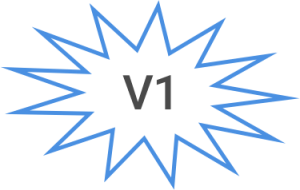(Note: This post applies to features as well as products, but I’m only using “product” for simplicity)
For a long time, everyone seemed to use “MVP” (Minimum Viable Product) to refer to the first version of what they’ll release as a product. “MVP” has been used in books about product management and startups, blog posts, etc. I still hear “MVP” a fair amount.
A couple of years ago, I started to hear “MLP” (Minimum Lovable Product) used by some people instead of “MVP.”
I personally like “MLP” more than “MVP” because a “lovable” product sounds more appealing and valuable than a “viable” product, but if you asked 10 people to define what an “MVP” or “MLP” is intended to represent, you’d probably hear several different answers. Most of the answers might generally point in the same direction, but there wouldn’t be alignment in the definition.
Now think about how important it is for a team within a company to be aligned on what they’re setting out to do. Whenever “MVP” or “MLP” is said within that team or company, each person hearing it might have a different mindset about that first release.

Is the first release meant to test a hypothesis? Is it meant to help establish a new revenue stream? Is it meant to make a specific customer happy (in the enterprise world)?
Should the first release look perfectly polished? Should it be adequately polished? Is it okay to be somewhat ugly (as long as it’s usable)?
Different people think about these things differently, even within the same team/company. This is the problem with using “MVP” or “MLP.”
Instead, I use “V1” (Version 1) to represent what will be in a first release, and I accompany that with a story and artifacts (e.g., goals, flow diagram, wireframes, a design) to provide context and details. “V1” simply means the first version, while the purpose of that first version — the goals, etc — vary from one situation to another.

The same person (product manager) could take a different approach for a first release in different situations. For example:
- Is the first release going to be a limited rollout? A full rollout? Will it only be seen by existing users? New users? Both?
- Are the users who will see the first release in close communication with the team/company? Or is the intention to have them be on their own?
- Can the first release include a manual process that’s not a seamless solution or fully automated (e.g., using Google Forms)? Or does it need to be seamless / automated?
There’s no one size fits all in product management. Use an approach that relies on YOUR definition, not someone else’s assumption. “V1” can help you do this.
